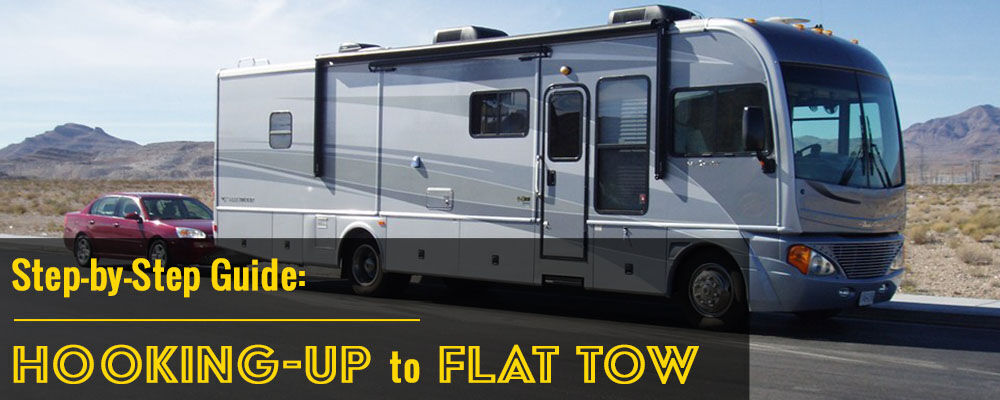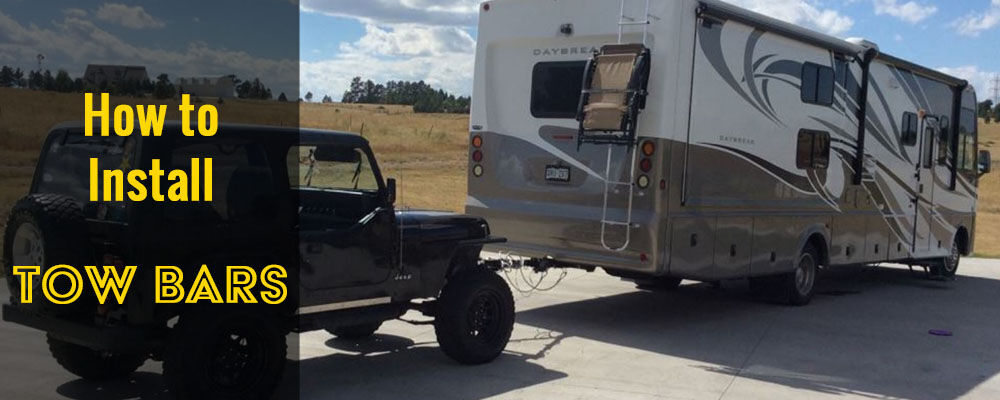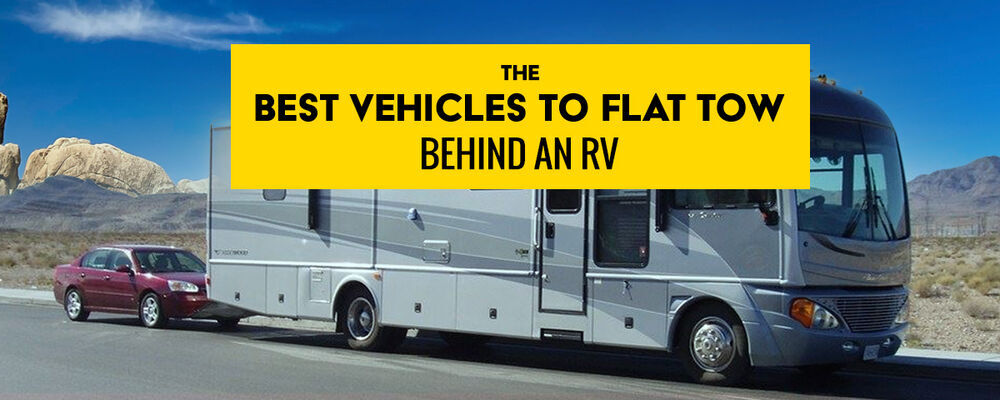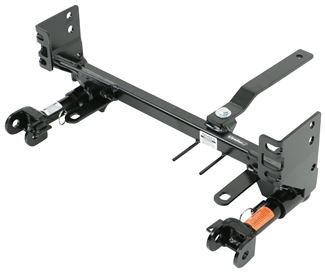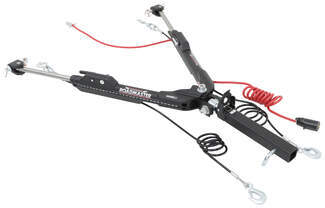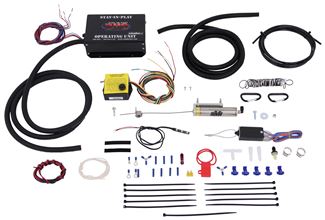
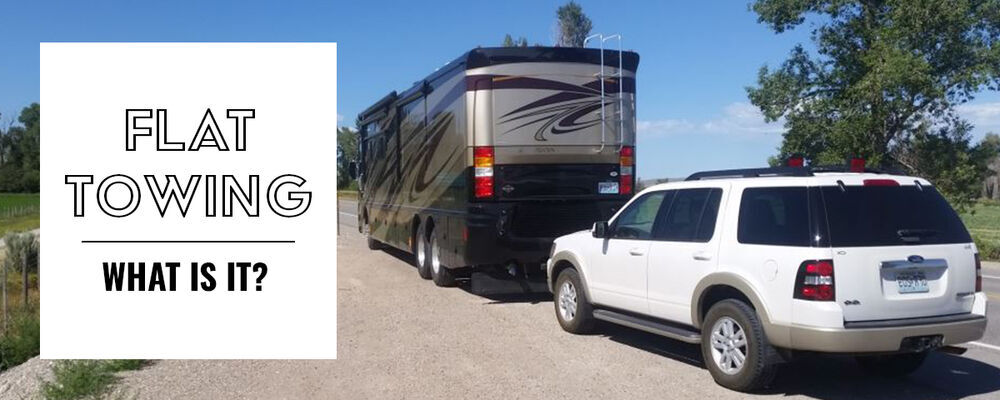
What Is Flat Towing and How to Ditch the Trailer
What is Flat Towing?
Other Towing Options
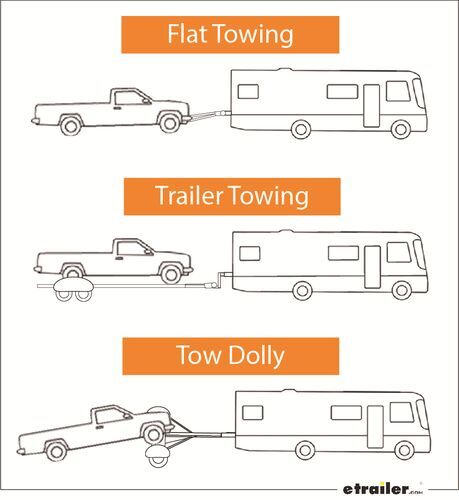
How Does Flat Towing Work?
First, You Need an RV Hitch
Second, You Need a Base Plate Kit
Third, You Need a Tow Bar
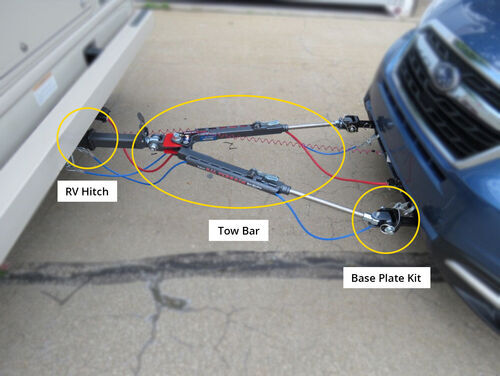
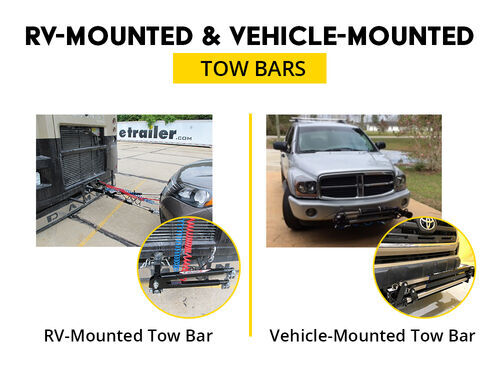
What Do I Need to Flat Tow?
Base Plate Kit: As mentioned above, a base plate kit provides attachment points for a tow bar to connect. Tow Bar: A tow bar is the component bridging the gap between the back of the RV (hitch receiver) and the front of the toad (base plates). Safety Cables: These cables connect your RV to your toad and provide extra safety in case the tow bar fails and your toad becomes disconnected from the RV. Light Wiring Kit: You are legally required to have your toad’s tail lights and turn signals synchronized with your RV’s: brake lights, turn signals, and emergency flashers. A light wiring kit ensures that when you activate these lights on your RV, the lights on your toad will activate too. Supplemental Braking System: Supplemental braking systems relay braking information from your RV to your toad so when you press the brakes on your RV, the brakes on your toad engage too. Most states require a supplemental braking system, so it’s in your best interest to have one installed or ready to use. Additional Components: When planning your flat towing rig, your RV or toad may require additional components, like a fuse kit, battery disconnect, or hitch high-low adapter. Make sure you research thoroughly how to adapt your RV and toad for flat towing.
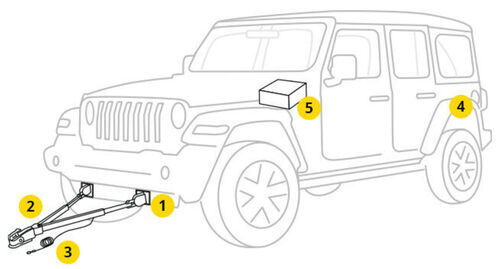
What Are the Advantages of Flat Towing?
May Be More Cost Effective For an entire flat towing setup, expect to spend $2,000 - $4,000. While this can be heavy on the wallet, a tow dolly usually costs $3,000 - $4,000 without any of the additional components, like a brake controller if you're looking at an electric model. A trailer rig can exceed $10,000. Flat towing could save you a pretty penny.
Easy to Hook Up Once your RV and toad are flat towing ready, the hookup process before hitting the road is easy and straightforward compared to the other towing methods. Just connect the tow bar, safety cables, wiring, and braking system. With proper installation, all of this should take less than 30 minutes.
Convenient to Store Do you have space to store a trailer or a large tow dolly? Many people don’t, and for those people, flat towing offers a great advantage. You don’t need much space for a tow bar, and if your tow bar stays installed on the back of your RV or the front of your toad, you don’t need extra storage space for it at all.
Great Maneuverability Many modern tow bars have long arms that make it easier to maneuver your RV and toad in tight locations, which is great for gas stations, small campsites, and crowded parking lots. However, tow dollies and trailers are typically more rigid and may not have as tight of a turn radius as many flat towing rigs.
What Are The Disadvantages of Flat Towing?
Requires Vehicle Modifications To get your toad ready to flat tow, it needs a base plate kit installed, a lighting system wired, a braking system installed, and any additional components required by your toad’s manufacturer. If you don’t want to bother with prep work, then having someone in your group drive your extra vehicle might be better for you.
Can’t Back Up RV When your toad is hooked up to the RV for flat towing, you won't be able to back up the RV. Flat towing requires the toad’s front wheels to be unlocked, so if you back up the RV, the toad’s wheels will turn sideways, jamming the tow bar into your toad. You could bend the bar or even distort your toad’s frame.
Limited Dinghy Options Many vehicles cannot be flat towed. For example, many automatic transmission vehicles cannot be flat towed without disconnecting the transmission from the rest of the drivetrain. Do your research on vehicles that can and cannot be flat towed. To find out if your vehicle can be flat towed, check your its owner's manual or look your car up online. Flat towing information is usually listed under "Recreational Towing" in your manual.
Can’t Easily Swap in Other Vehicles A complete flat towing setup is vehicle specific. For example, a base plate kit installs on one vehicle and cannot be swapped onto different vehicles. Other components specific to your rig may include the supplemental braking system and wiring for the lights. This makes it difficult to flat tow your crossover one weekend and your truck the next.
What Are the Costs Associated with Flat Towing?
Flat Towing Parts Cost:
Flat Towing Installation Labor Costs:
Takeaway
Departments
Towing
- Trailer Hitch
- Fifth Wheel
- Gooseneck
- Towing a Vehicle
- Front Hitch
- RV Hitch
- ATV Hitch
- HD Truck Hitch
- Vehicle Wiring
- Brake Controller
- Ball Mounts
- Weight Distribution
Sports and Recreation
Trailer Parts
- Utility Trailer
- Boat Trailer
- Landscape Trailer
- Enclosed Trailer
- 5th/Camper Trailer
- Car Hauler
- Horse Trailer
Vehicle
Contact & Help

What our customers are saying:
"Quick processing, and delivery. reasonably priced very satisfied"
Bernie
Krakow, WI
Popular Vehicles
- Subaru Forester
- Ford F-350 Super Duty
- Ford F-250 Super Duty
- Chevrolet Silverado 1500
- Jeep Wrangler Unlimited
- Jeep Wrangler
- Ram 3500
- Toyota Highlander
- Ram 2500
- Chevrolet Silverado 2500
- Subaru Outback Wagon
- Chevrolet Silverado
- Dodge Ram Pickup
- GMC Sierra 2500
- Ram 1500
- Ford F-250 and F-350 Super Duty
- Jeep Grand Cherokee
- Toyota Tacoma
- GMC Sierra 3500
- Toyota Tundra
- Ford Escape
- More >>


